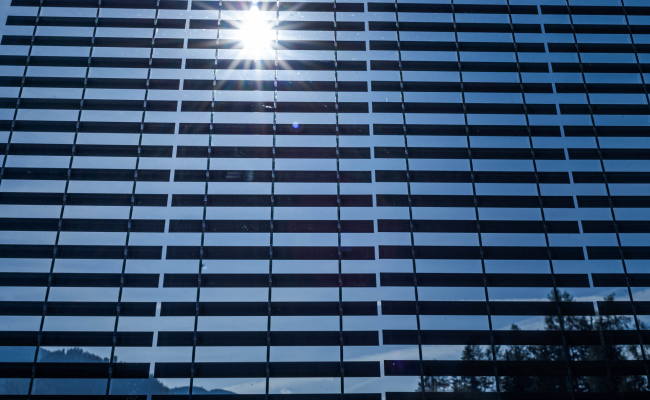Self-Cleaning Glass Technical FAQs
Need answers to your technical questions? This is the section for you.
All glazing systems where the gasket is lubricated with silicone oil are incompatible with Pilkington Activ™. Leaching from these product types onto the glass coating will create a hydrophobic area around the edge of the glass known as "picture framing", which is unacceptable to customers. The same is true of many silicone based rubber gaskets. However, there are many gaskets that are compatible with Pilkington Activ™, e.g. gaskets that are part of a co-extruded system, a dry gasket used without lubricant, or a gasket using an alternative lubricant such as glycerine oil. These products are listed on the Technical Update page.
Some are. A list of gaskets that have passed NSG Group's compatibility tests can be found on the Technical Update page. If you wish to use a gasket not currently on our list, please submit it to NSG Group for testing.
Pilkington Activ™ will clean off fingerprints but it may take a period of time, dependent on environmental conditions. It may take as long as several weeks. NSG Group suggests customers avoid touching the glass wherever possible, as fingerprints may act as a key for inorganic dirt to stick to and therefore appear worse. NSG Group also recommends that installers wear gloves to avoid fingerprints and traces of contaminants from other glazing compounds, silicone in particular, which are difficult to remove.
In dry weather, Pilkington Activ™ destroys organic dirt, but inorganic dirt is not washed off. However, there is no difference in the amount of dirt or dust that sticks to Pilkington Activ™ compared with normal glass. This has been shown in laboratory tests and real life tests in the dusty Arizona desert.
Several brands have been tested. If and when used, the agent needs to be rinsed off the glass with warm water and soap (e.g. washing up liquid), which should ensure that the coating remains unharmed. There is a list of suitable cleaners on the Technical Update page.
Pilkington Activ™ has been cited as an example of nanotechnology. Whilst the coating is nanometres thick it is really a development of thin film technology, rather than being a specific nanotechnology product. The name nanotechnology is usually applied to the scientific investigation or application of particles and/or structures which have sizes of less than one hundred nanometres. Particles or structures of this size can have unique properties compared with bulk materials. Pilkington Activ™ is based on a thin film of titanium dioxide rather than particles of titanium dioxide and the film is approximately 15 nanometres thick.
Whilst falling under the broad definition of nanotechnology we feel it is best referred to as a development of thin film technology. The coating is applied by a process called chemical vapour deposition which involves the pyrolytic addition of chemicals on a hot glass substrate to form a thin film. This process is conducted as the glass is manufactured.
Whilst falling under the broad definition of nanotechnology we feel it is best referred to as a development of thin film technology. The coating is applied by a process called chemical vapour deposition which involves the pyrolytic addition of chemicals on a hot glass substrate to form a thin film. This process is conducted as the glass is manufactured.
No it just blocks the effectiveness of Pilkington Activ™. Once silicone is removed, Pilkington Activ™ resumes its normal self-cleaning properties. It should be noted that silicone contamination is very difficult to remove effectively, so if your fitter has left silicone marks on the windows, they should be called back to remove any contamination with specialist treatments.
When there are long dry spells there will not be any rainwater to wash off loosened organic dirt and organic particles. Light use of a hosepipe can simulate rain and clean the glass. If the glass is overwhelmed by a contaminating source, for example a large tree, the self-cleaning properties may not keep up with the rate of organic material falling on the glass, and the glass may need to be cleaned to remove any heavy deposits of tree sap.
Salt deposits from salt spray are inorganic. Rain normally removes this but if there is a long dry spell then you may have to resort to using a hose pipe to simulate rain. Pilkington Activ™ is tested for resistance to salt spray.
Pilkington Activ™ needs both daylight and rain to work effectively. When the roof angle gets too low the rain does not wash the loosened dirt off as effectively. A good flow of water across the glass is beneficial. Pilkington Activ™ still gives better results than ordinary glass with low angle roof applications. We recommend a minimum angle of 10 degrees, but 30 degrees or more is ideal.
No. On the contrary the process is photocatalytic and is antibacterial. This prevents fungi and mould growth that might start to build on ordinary glass.
For a single pane of 4 mm Pilkington Activ™ Blue the UV transmission is 15%. If you want to reduce the UV transmission to very low levels, install Pilkington Activ™ as part of an Insulating Glass Unit with the other pane being Pilkington Optilam™. Note that even with very low UV transmission levels there is still a risk of fading and UV damage to furnishings etc. due to the power of the sun and the long periods of exposure behind the glass.
Contact Us
If you feel your question hasn't been answered, please don't hesitate to contact us by filling out the form on the page below:






























